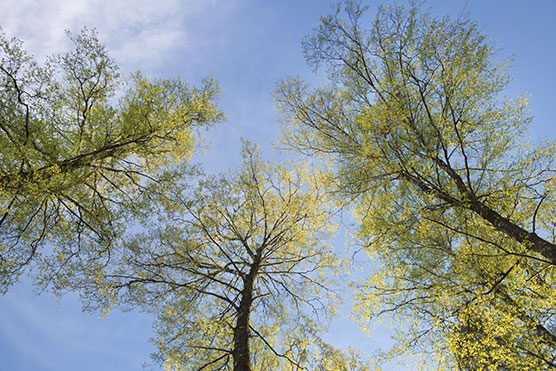Press release 2016-04-27 at 14:55
An international agreement was made in Paris to substantially reduce greenhouse gas emissions over the coming decades. However, a recent study shows that the current Finnish wood bioeconomy fails to meet this challenge.

© Riku Lumiaro
The goal of our national bioeconomy strategy is to replace non-renewable resources with renewable ones in order to mitigate the depletion of resources and climate change. The growing atmospheric carbon dioxide concentrations can be curbed by reducing carbon dioxide emissions and strengthening carbon sinks. The study conducted at the University of Helsinki and the Finnish Environment Institute sought to determine the amount of net carbon dioxide emissions that can be reduced in various Finnish wood use scenarios over the next century.
The scenarios examined in the study indicated that the opportunities to significantly reduce net emissions from the current level by increasing wood use are surprisingly limited.
“The majority of carbon harvested from forests is quickly released into the atmosphere, as a result of which the decreasing carbon sink capacity of forests is a key element of the results,” says Senior Scientist, Docent of the University of Helsinki Sampo Soimakallio of the Finnish Environment Institute. “Wood harvesting weakens the growth of the carbon stock stored in forests. On the other hand, by using wood we can avoid the utilisation of non-renewable raw materials.”
In order for wood use to produce significant reductions in net emissions, the entire wood use chain should be optimised to serve this goal. This would require an entirely new way of thinking and highly efficient new innovations.
“Carbon should be stored in wood products in the long term, and we should find uses for wood that provide effective means to prevent emissions,” Doctor of Technology Kim Pingoud states.
“Using wood has many benefits. In the scenarios that were examined, however, the emission reductions gained through replacing non-renewable raw materials were insufficient to compensate for the lost carbon sequestration capacity and the emissions caused by felling and production processes,” Senior Scientist Laura Saikku of the Finnish Environment Institute points out.
“Finnish forestry has produced a vast resource pool of well-growing forests. Information on the climate effects of wood use should be used in the development of innovations far more than currently is the case,” Professor Lauri Valsta of the University of Helsinki emphasises.
Wood bioeconomy as a whole was examined based on the current structure of the Finnish forest industry and the future structures presented in the low-carbon road map prepared by the Parliamentary Committee on Energy and Climate Issues. In individual scenarios, the quantities of wood used and the structure of the forest industry were maintained as constants throughout the period of review. The study combined the impact of wood harvesting on the development of the carbon stock in forests with the emissions from energy and material consumption of wood processing and the emission impacts of replacing non-renewable raw materials.
The study was financed by the Academy of Finland (ECOSUS and SURE projects) and the Maj and Tor Nessling Foundation.
Further information
Docent, Senior Scientist Sampo Soimakallio, Finnish Environment Institute (SYKE),
tel. +358 (0)295 525 1830, firstname.lastname@ymparisto.fi
Professor Lauri Valsta, University of Helsinki, Department of forest sciences,
tel. +358 (0)29 415 7971, firstname.lastname@helsinki.fi
Research article
Soimakallio, S., Saikku, L., Valsta, L., Pingoud, K. Climate change mitigation challenge for wood utilization – the case of Finland. Environmental Science and Technology. DOI: 10.1021/acs.est.6b00122